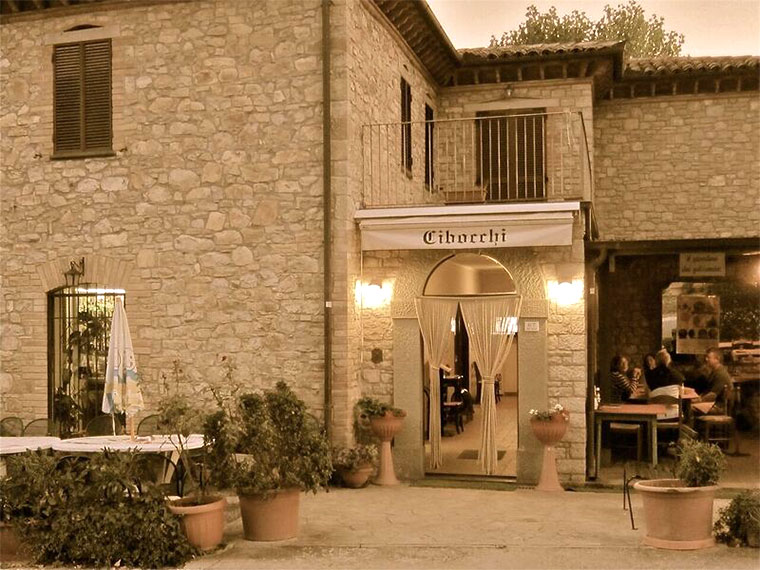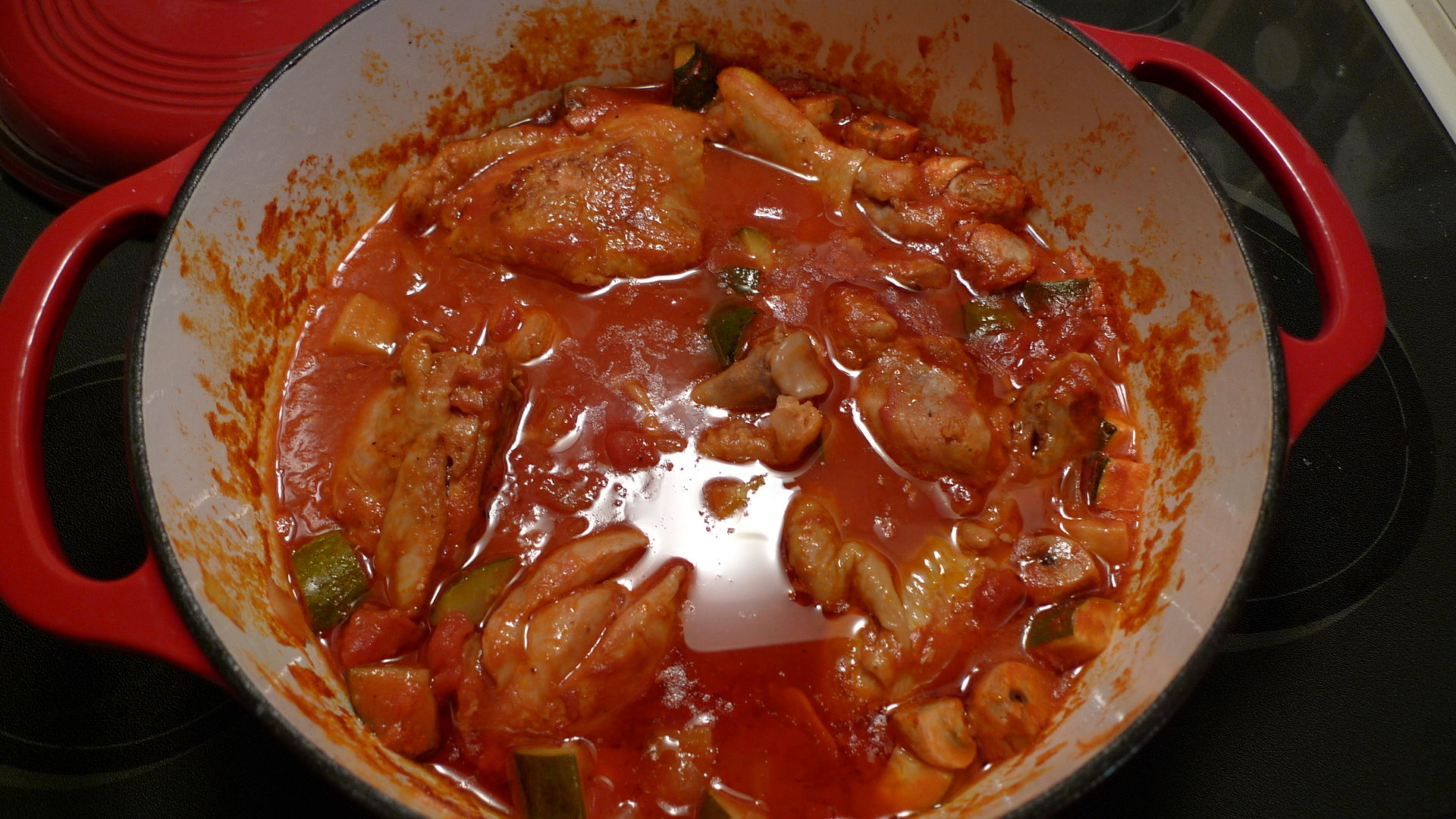It is a mistake to think that our immigrant forebears, however poor, went without meat. Country people have hunted for food since time immemorial and they still do. Pheasant and partridge, grouse and quail, duck and other wild water birds, pigeons, warblers, and even starlings, a bird not considered edible by Americans, and such wild creatures as hare, boar or roe deer make it into the stew pot. There are recipes infinitum for cooking game, some set forth in cookbooks but most passed down through the ages by word of mouth. Of course it was the women who rendered the tough wild meat tender and tasty, but nevertheless, the recipes are generically named alla cacciatora, “hunter’s style,” recalling the man of the house.
The method entails browning small pieces of meat still clinging to part of the bone, followed by long simmering in winey liquid until it is tender and succulent. The dish is as popular today as it ever was, even if it is made as often as not with domesticated rabbit or chicken as with game. There are probably as many versions throughout Italy as every cook who ever thought of making it, but overall recipes reflect local traditions.
Oddly, tomato figures in “cacciatora” wherever you go, whether north or south, even if the Italian south is associated more with “red sauce” dishes. An exception is Umbria’s tantalizing cacciatora in bianco, “white cacciatora” of rabbit cooked with chopped lemon peel, capers, fresh herbs, and green olives all bound together with a tangy sauce heady with both wine and vinegar—a preparation so unlike any other that goes by the same name as to merit a unique one of its own, but “cacciatora“ it is.

I first came across it at Ristorante Cibocchi outside of Todi where I landed one wet winter night, cold and hungry after a torturous drive up from Rome prolonged by a detour dashing about town looking for a restaurant that would still seat me for dinner. I would have never found the place under the circumstances but for a local who told me, “It’s the only place around for genuine cucina casalinga [family cooking]” and pointed me in the right direction. By the time I got there I was the only customer. The owner, who said her aunt was behind the stove, informed me that only some rabbit “alla cacciatora” was left. It was bracing and refreshing, and I ate it with gratitude before asking the woman who had served me about what had gone into the sauce. She rattled off the ingredients as though she had made it herself, which I suspected she had.
Once back home, I reproduced the recipe, substituting chicken for rabbit, with splendid results.
Chicken alla Cacciatora in the Style of Ristorante Cibocchi
For 6 people
Serve this with plenty of sturdy bread, which serves to soak up the plentiful and delicious juices.
•3½ pound free-range or organic chicken, cut into 8 or 10 pieces
•6 tablespoons extra-virgin olive oil
•3 large cloves garlic, smashed
•½ onion, chopped
•2 teaspoons minced fresh rosemary, or 1 teaspoon crumbled dried rosemary
•1 teaspoon minced fresh sage, or ½ teaspoon crumbled dried sage
•1/3 cup pitted, brine-cured tart green olives, halved
•½ cup good quality dry white wine
•1½ tablespoon white wine vinegar
•1 tablespoon chopped capers
•1 slice of organic lemon, ¼ inch thick, seeded and minced, including peel
•pinch of red pepper flakes, or to taste
•½ teaspoon sea salt, or to taste
1. Blot the chicken pieces well and trim off excess fat.
2. In a deep, heavy-bottomed skillet ample enough to accommodate all of the chicken pieces without crowding, warm the olive oil over medium-high heat. When it is hot enough to make the chicken sizzle, add the cut up pieces one by one without crowding the pan. If necessary, sauté the chicken in two batches to give the pieces enough room to brown properly. When they are colored nicely and evenly on all sides, about 15 minutes, transfer the chicken to a plate and set aside.
3. To the pan add the garlic, onion, rosemary, and sage; sauté over low heat until well softened but not brown, about 6 minutes. Return the chicken pieces to the skillet along with the olives. Use a wooden spoon to toss all the ingredients together. Pour in the wine and vinegar, capers, lemon, red pepper flakes, and salt. Cover partially and continue cooking the chicken until it is done (170°F on an instant-read thermometer), about 20 minutes. If necessary, add up to ½ cup water as the chicken cooks to keep it moist and to ensure that there will be plenty of pan juices when it is done. Serve at once.
Julia della Croce is a food writer and James Beard award-winning cookbook author and recipe developer based in New York. She is presently incubating a book about her family’s ancestral region, Sardegna. Visit her website, www.juliadellacroce.com and blog, http://juliadellacroce.com/forktales1/, connect on Facebook: Julia della Croce – chef & foodwriter, Twitter: @juliadellacroce and Instagram: juliadellacroce.




























